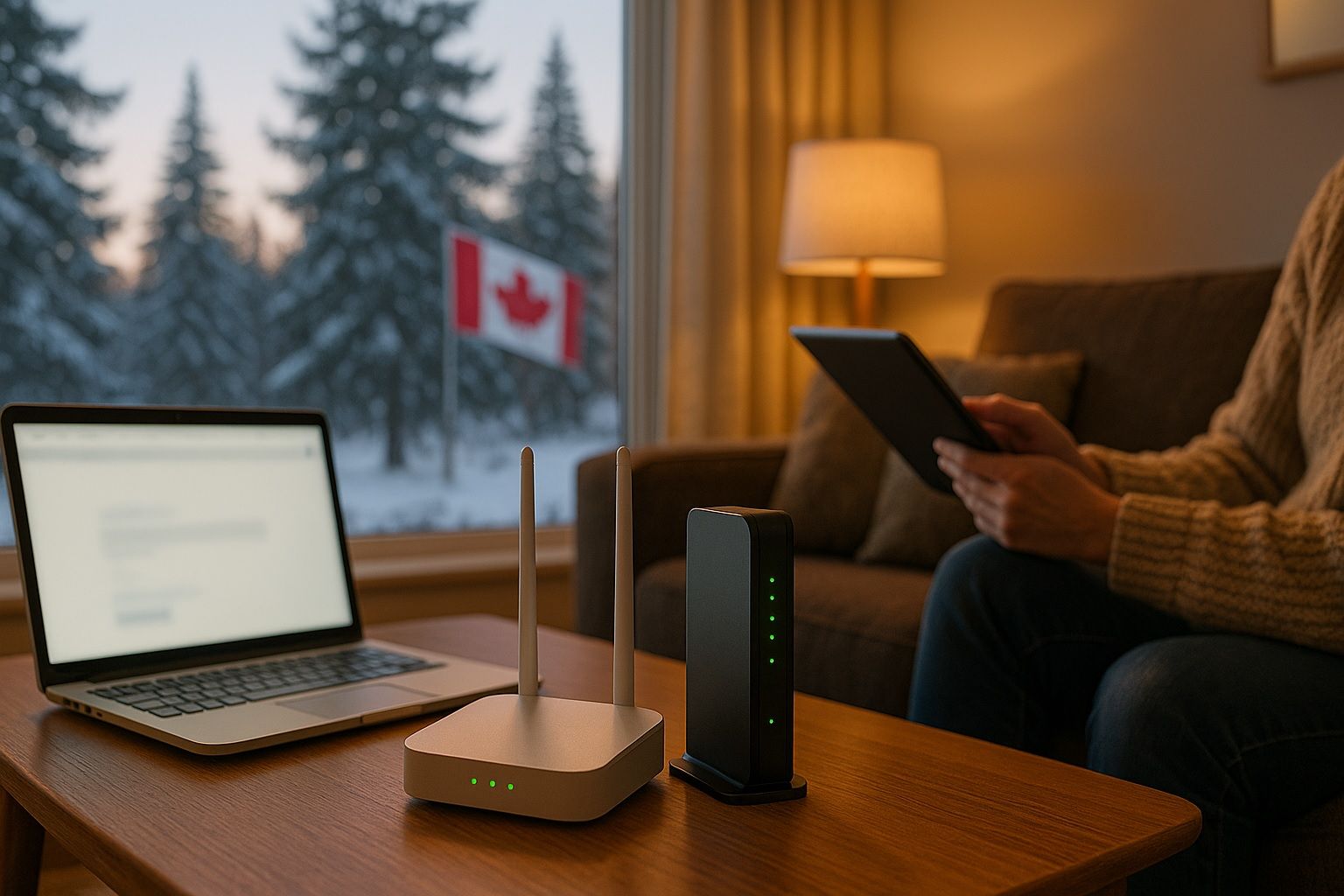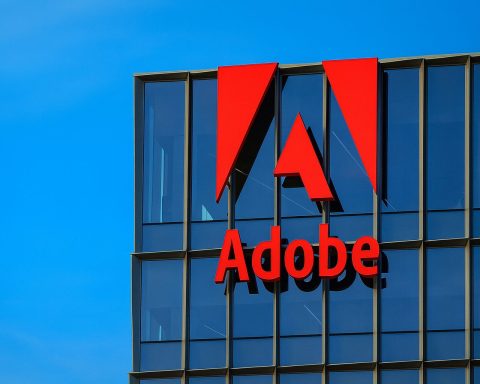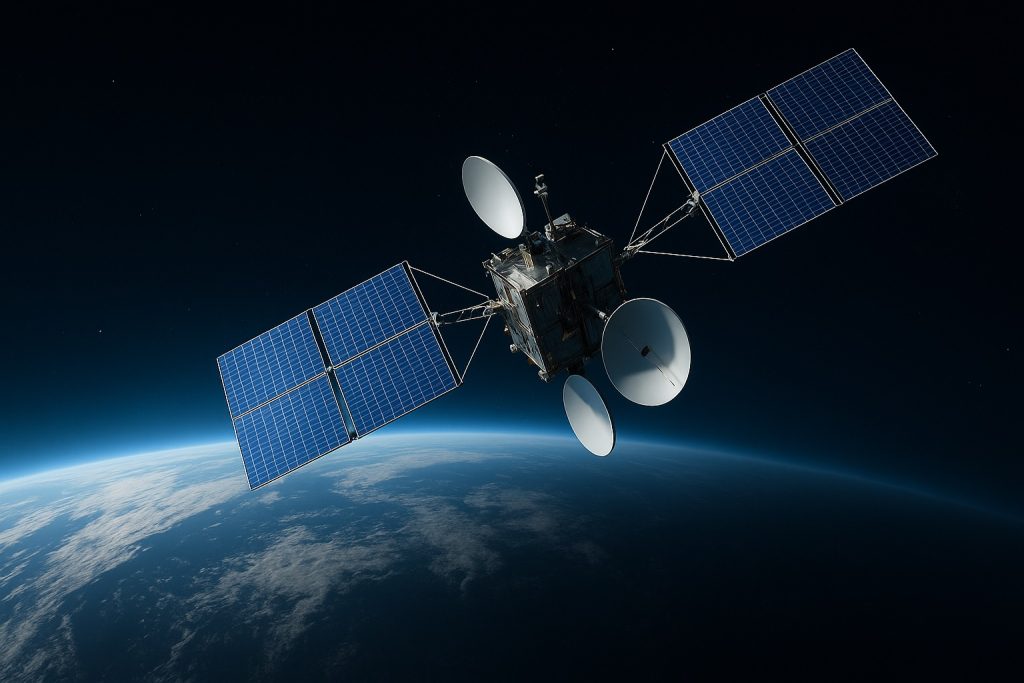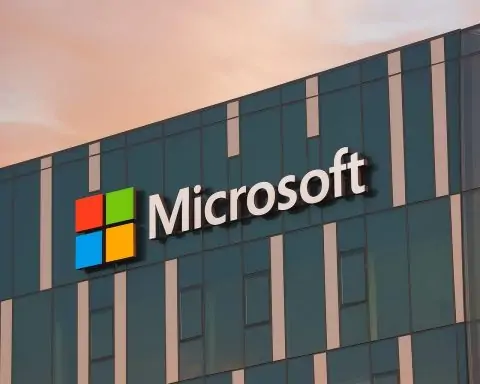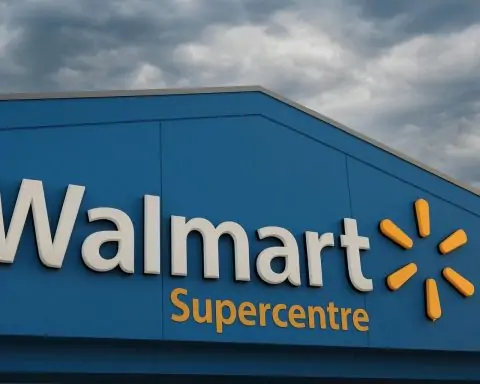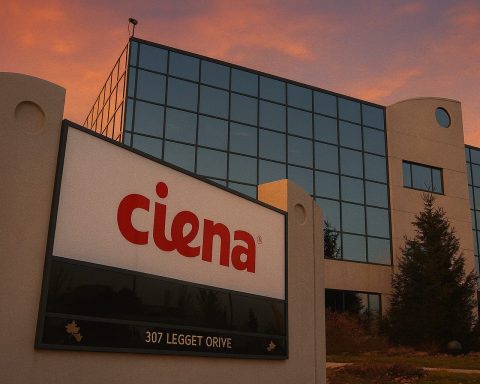- By early 2025, about 93.5% of Canadian households have access to high‑speed internet (50 Mbps down/10 Mbps up), up from 79% in 2014.
- The Universal Broadband Fund (UBF) started in 2020 with a $3.225 billion budget and targets 98% of households with 50/10 by 2026 and 100% by 2030.
- Bell Canada had fiber passed to about 7.3 million premises by mid‑2023, while Telus passed more than 3.1 million premises with fiber in British Columbia and Alberta.
- Rogers Communications became Canada’s largest broadband provider after acquiring Shaw in 2023, serving roughly 7 million internet customers, with the combined Rogers/Shaw passing about 10 million homes.
- Approximately 90% of Canadian households can access gigabit speeds (1 Gbps), largely via fiber or upgraded cable networks.
- Starlink began service in Canada in 2021 and by May 2024 had over 6,000 active satellites delivering service worldwide, with typical speeds of 50–200 Mbps down, 10–40 Mbps up, and latency of 20–50 ms; hardware costs about $499 CAD and monthly service around $140.
- Xplore’s next-generation satellite plans offer up to 100 Mbps with unlimited data, priced roughly in the $100–$150 per month range.
- LTE mobile coverage reaches about 99.5% of the population and 97.5% of people in rural areas, while 5G coverage exceeded 90% of the population by 2023, with 5G Home Internet offerings in select areas.
- In November 2023 the CRTC required large carriers to offer third-party access to their fiber networks in Ontario and Quebec, a move intended to boost competition alongside earlier wholesale rules.
- Telesat Lightspeed plans to begin launches in 2026 and to begin providing low-latency broadband to remote Canada by about 2027.
Canada’s vast geography and diverse communities present unique challenges and opportunities for internet connectivity. In recent years, significant progress has been made to bring high-speed internet to Canadians nationwide, yet stark disparities remain between densely populated cities and sparsely populated rural or remote regions. As of early 2025, approximately 93.5% of Canadian households have access to high-speed internet (defined as at least 50 Mbps download/10 Mbps upload) – up from about 79% in 2014 [1] [2]. The federal government’s Universal Broadband Fund (UBF), launched in 2020 with a $3.225 billion budget, aims to extend 50/10 Mbps service to 98% of households by 2026 and 100% by 2030 [3]. This report examines the current state of internet access in Canada – covering all major forms of access (fiber, cable, DSL, fixed wireless, 5G mobile, and satellite), the national coverage and regional disparities in connectivity, the major service providers and their market presence, typical pricing and speed tiers, the role of satellite internet (Starlink, Xplore, etc.) for remote areas, and key government initiatives and future trends shaping Canada’s digital landscape.
Forms of Internet Access in Canada
Fiber-Optic Broadband (FTTH)
Fiber-to-the-home (FTTH) is considered the gold standard for broadband, offering ultra-fast speeds and low latency via fiber-optic cables directly to homes. In Canada’s urban and suburban areas, fiber deployments have accelerated over the past decade. Bell Canada (in Ontario, Quebec, Atlantic Canada, and Manitoba) and Telus (in Western Canada) are the leading fiber providers. Bell alone has upgraded its network extensively, passing about 7.3 million premises with fiber by mid-2023 as it replaces older DSL lines [4]. Telus, similarly, has over 3.1 million premises passed with fiber in B.C. and Alberta [5]. Regional telecoms like SaskTel in Saskatchewan (with its “infiNET” service) and smaller providers (e.g. Eastlink in Atlantic Canada, Videotron in Quebec’s cities, and municipal fiber projects) also contribute to fiber availability [6] [7]. Fiber plans commonly offer speeds from 100 Mbps up to 1 Gbps or higher, often with symmetrical upload speeds. In many cities, gigabit fiber service is widely available – nearly 90% of Canadian households can access gigabit speeds, primarily via fiber or upgraded cable networks [8]. Fiber internet pricing varies by provider and speed; for example, a 1 Gbps plan in an urban area typically ranges from around $80 to $120 per month, while entry-level 50–100 Mbps fiber plans can be found in the $50–70 range (with prices trending downward in recent years for mid-range speeds [9]). Fiber’s performance is excellent, with low latency and reliability suitable for bandwidth-intensive applications (e.g. 4K streaming, online gaming, telehealth). However, fiber infrastructure is expensive to deploy, so coverage in very rural or remote communities remains limited – providers prioritize higher-density areas where returns on investment are greater.
Cable Broadband (HFC)
Cable internet is delivered over hybrid fiber-coaxial (HFC) networks originally built for cable TV. It is widely available in urban and many rural regions, often where telephone companies have not yet deployed fiber. Major cable ISPs include Rogers Communications (which, after acquiring Shaw in 2023, now serves most provinces), Videotron (Quebec), Cogeco (Ontario/Quebec), and Eastlink (Atlantic Canada). The Rogers-Shaw combined network, for instance, covers roughly 10 million homes with DOCSIS-enabled cable lines (each of Rogers’ and the former Shaw’s networks passed just under 5 million homes as of 2023) [10]. Cable broadband speeds have improved with technology upgrades: most cable networks support DOCSIS 3.1, enabling download speeds up to 1 Gbps (though upload speeds are typically more limited, e.g. 30–100 Mbps). Rogers and other cablecos are planning DOCSIS 4.0 upgrades to offer multi-gigabit speeds in coming years [11]. Pricing for cable internet is comparable to fiber in many areas – e.g. around $70–$100 per month for 300 Mbps to 1 Gbps plans, with lower-tier plans (50–150 Mbps) in the $50–$80 range. Cable networks are prevalent in cities and towns; thus, virtually all urban Canadians have access to high-speed cable or fiber, contributing to near-universal urban broadband coverage. In rural areas, legacy cable networks exist in some small towns, but many remote communities were never wired for cable, limiting this technology’s reach outside population centers.
DSL (Digital Subscriber Line)
DSL uses telephone lines to deliver internet and was once the dominant broadband mode. Bell (and its affiliates like Bell Aliant in Atlantic Canada) and Telus (in the West) still operate extensive DSL networks, especially in areas not yet upgraded to fiber. DSL speeds vary widely based on the line technology and distance from network nodes – older ADSL offers a few Mbps, while VDSL2 and fiber-to-the-node systems can reach 25–50 Mbps (and in some cases up to 100 Mbps downstream). In practice, many rural DSL connections top out around 5–15 Mbps if the infrastructure is dated. DSL remains important in some rural and semi-rural communities where neither fiber nor cable is available, but its significance is declining as fiber and fixed wireless expand. Incumbent telcos have been actively transitioning customers off DSL: Bell and Telus have both replaced large portions of their DSL footprint with fiber or wireless home internet solutions [12] [13]. By mid-2023, Bell’s fiber build largely eclipsed its DSL base, and Telus’s fiber network had grown “substantially bigger than its legacy xDSL footprint” [14]. For Canadians still on DSL, prices can be relatively high for the speeds offered (e.g. ~$50–$70 for 10–25 Mbps in some rural locales), and performance (latency, reliability) is modest. DSL infrastructure also faces distance limitations, meaning the most remote phone line customers may only get sub-broadband speeds. Over time, DSL is expected to be phased out or overbuilt by superior technologies as Canada pushes toward the 50/10 Mbps universal service objective.
Fixed Wireless Access (FWA)
Fixed Wireless Access refers to delivering home internet via radio links from towers to fixed receivers on rooftops or inside homes. It has emerged as a crucial solution for rural areas where running fiber or cable is prohibitively costly. A network of wireless base stations (using technologies like LTE or 5G on licensed spectrum, or wireless broadband on unlicensed bands) transmits signals to customer premises equipment. Xplore (formerly Xplornet) is a prominent rural provider leveraging FWA, offering wireless home internet plans with speeds up to 50–100 Mbps in many regions. In fact, Xplore has rolled out a new 5G-based fixed wireless service (“5G Ultra”) promising speeds up to 500 Mbps in select rural areas [15] – bringing city-like speeds to the countryside where this service is live. The major telecom companies also provide FWA in underserved areas: for example, Bell’s Wireless Home Internet service and Rogers’ Rural Wireless Internet use 4G/5G to deliver ~25–50 Mbps to rural customers; Telus offers similar “Smart Hub” fixed wireless plans. These services often come with unlimited data (or high caps) to be viable broadband replacements. Coverage: Fixed wireless now reaches many rural communities in southern Canada, though line-of-sight limitations and terrain can leave some pockets unserved (hilly or heavily forested areas may struggle with signal). Performance can be very good if the user is near the tower – often comparable to a mid-tier wired connection – but it may degrade with distance or heavy network loading. Typical FWA latency is 20–40 ms (for 5G) up to ~50 ms (for LTE), suitable for video streaming and video calls. Prices for FWA tend to be similar to DSL or entry cable packages (e.g. $50–$100/month, depending on speed). The expansion of 5G is further boosting FWA: with over 90% of Canadians now covered by 5G mobile networks [16], carriers are leveraging that infrastructure to offer home internet in areas that lack fiber/cable. Fixed wireless has proven “a viable option in sparsely populated areas,” contributing to rising rural broadband availability [17]. It is a key tool in bridging the digital divide while longer-term fiber builds continue.
5G Mobile Broadband
In addition to fixed wireless (which uses cellular technology for dedicated home service), Canadians also access the internet on the go via mobile broadband. Canada’s three national wireless carriers – Rogers, Bell, and Telus – have rolled out extensive 4G LTE and 5G networks. Mobile coverage is near-universal for LTE (99.5% of the population and even 97.5% of those in rural areas have LTE signal [18]), and 5G coverage exceeded 90% of the population by 2023 [19]. This means that even many rural Canadians can get online via smartphones or mobile hotspots, albeit data costs on mobile plans are higher than wired home internet plans. 5G technology offers peak download speeds in the hundreds of Mbps and much lower latency than 4G, although real-world mobile speeds average lower (often 50–150 Mbps) and depend on network congestion. Mobile carriers have introduced “5G Home Internet” offerings (technically a form of FWA) in select areas, positioning them as an alternative to wired broadband. For instance, Rogers and Bell market home internet over their cellular networks in communities where they don’t have wired infrastructure, typically with a router/antenna installed at the home. These plans often come with unlimited data and speeds akin to a mid-tier broadband connection. In remote regions (e.g. parts of the Far North), 4G/5G coverage may still be absent or only available in concentrated settlements, so mobile broadband isn’t a solution everywhere – but new investments (including dedicated Indigenous community cellular projects) are extending coverage to more remote areas each year. As 5G networks mature (and future 5G Advanced/6G technologies emerge), mobile broadband will play an increasing role in Canada’s internet landscape, both for personal device connectivity and as backhaul for home internet in hard-to-reach locales.
Satellite Internet
For Canada’s most remote and sparsely populated areas – the far north, isolated villages, and fly-in communities – satellite internet is often the only feasible option. Until recently, satellite service meant geostationary satellites with very high latency (~600–800 ms) and limited speeds/data. Companies like Xplore (Xplornet) offered such services, typically topping out at 10–25 Mbps and with strict data caps, suitable mainly as a last resort. However, the advent of Low-Earth Orbit (LEO) satellite constellations has been a game-changer for remote connectivity [20]. The most prominent example is Starlink by SpaceX, which became available in Canada starting 2021 and has rapidly expanded. “Canada and the United States were the first markets to experience Starlink’s satellite internet services” [21], and as of May 2024 Starlink had over 6,000 active satellites delivering service globally [22]. Starlink’s coverage encompasses all of Canada (even high Arctic latitudes) as long as the user has a clear view of the sky. It offers download speeds typically 50–200 Mbps, uploads 10–40 Mbps, and latency around 20–50 ms – vastly superior to older satellite systems and comparable to terrestrial broadband. This performance has made Starlink an “important provider in Canada, particularly in rural and remote areas that lack access to traditional fixed broadband” [23]. The trade-off is cost: Starlink hardware runs around $499 CAD for the dish kit, and service is about $140 per month [24] (though there are sometimes promotions or region-specific discounts). Despite the price, many remote households, farms, and businesses have adopted Starlink where no other fast option exists.
Meanwhile, Xplore has launched a “next-generation” satellite service using newer satellite capacity (including partnerships with providers like Viasat or Hughes). Xplore now advertises satellite plans up to 100 Mbps with unlimited data [25], a huge improvement over its legacy offerings. This likely leverages High-Throughput Satellites or LEO partnerships to reduce latency and increase capacity. Pricing for Xplore’s satellite plans is typically in the same ballpark as Starlink (roughly $100+ per month), and the company often bundles installation deals. Other satellite developments include the planned Telesat Lightspeed LEO constellation, a Canadian government-supported project aiming to begin launching satellites in 2026 and provide low-latency broadband globally (with an initial focus on enterprise and government connectivity in remote Canada by ~2027). For now, Starlink and Xplore dominate consumer satellite internet in Canada. Suitability: Satellite is truly a solution of last resort – ideal for remote regions with no other connectivity. It brings internet to off-grid cabins, northern Indigenous communities, ships, and other hard-to-reach users. However, even LEO satellite bandwidth is a shared resource, so performance can fluctuate based on user load and satellite cell capacity. And while LEO latency is good, it’s still slightly higher than wired or terrestrial wireless links. Overall, satellite internet is indispensable for closing the final gaps in Canada’s digital divide, ensuring even the farthest-flung residents can get online.
Coverage and Regional Disparities
Canada’s broadband landscape is marked by a strong urban-rural divide. In urban and large population centres, residents enjoy near-ubiquitous high-speed coverage – often with a choice of fiber and cable providers offering gigabit-class service. By contrast, many rural and remote communities have historically been underserved, with only slower DSL or satellite, if anything. Thanks to recent investments, the gap is narrowing but not yet closed. Nationally, about 95.4% of households can access broadband at 50/10 Mbps with unlimited data [26]. However, this headline number masks the disparity: in rural communities, only about 78% of households have 50/10 service available [27]. In other words, roughly one in five rural households still lacks access to what the CRTC considers basic high-speed broadband. The situation is even more challenging in Canada’s far north (Yukon, Northwest Territories, Nunavut) and in some First Nations reserve lands, where connectivity lags behind the national average [28]. The federal government’s connectivity dashboard shows progress: as of late 2023, 93.5% of households had high-speed access, up from 87% a few years prior [29]. Projections indicate 98.6% coverage by 2026 if planned projects are completed [30].
Urban areas: Virtually all urban Canadians can get 50/10 speeds, and in practice most can get far higher (100 Mbps, 1 Gbps, etc.). Densely populated cities have extensive fiber and cable builds, and even smaller towns often have at least cable or fixed wireless coverage. Urban users also benefit from competition – for example, a resident of Toronto or Vancouver might have the choice of Bell fiber vs. Rogers cable vs. independent ISPs, plus mobile 5G services. Accordingly, urban internet speeds are generally excellent: median download speeds in major cities can exceed 150 Mbps, and many users opt for gigabit plans.
Rural areas: Rural Canadians have seen major improvements recently, but there’s still a gap. According to a 2022 CIRA report, median rural download speeds jumped from about 7 Mbps in 2020 to ~21 Mbps in early 2022 as new investments took hold (a threefold increase) [31]. Yet urban speeds were roughly 3–4 times higher on average, meaning rural users still experience slower connections in practice. The coverage gap stems from economics and geography – low population density makes it costly to run fiber/cable to every farm or hamlet. Instead, rural broadband has relied on a patchwork: DSL from local phone exchanges, wireless ISPs covering farm regions with towers, and lately LEO satellites bringing service to places ground networks can’t reach. Within rural Canada, there are regional differences too. Some provinces have aggressively pushed rural broadband: Quebec’s “Operation High Speed” (a joint federal-provincial effort) has essentially achieved the goal of offering high-speed internet to all households in that province [32]. The Atlantic provinces and Ontario are also close to universal 50/10 coverage [33]. But in provinces with more remote northern regions (B.C., Alberta, Manitoba, Saskatchewan) and in the Territories, there are still more communities awaiting upgrades [34]. The most remote Indigenous and northern communities often face the largest challenges – some have recently gotten fiber links or upgraded microwave backhaul (bringing new broadband options), while others still lean on satellite or aging infrastructure. The government has recognized these gaps with dedicated funding streams (e.g. an Indigenous-focused broadband fund, and support for backbone projects in the North).
In summary, Canada’s coverage map in 2025 shows broad national reach of basic broadband (95%+), but the last 5%–10% of households – largely rural/remote – are the toughest to connect. Those remaining gaps are concentrated in very low-density areas and the farthest regions. As a result, the digital divide has shifted: it’s no longer city vs. small town (many small towns now have fiber or cable), but rather “on grid” vs “off grid.” A farm just outside a town might have fiber, while another 50 km down a remote road might still be waiting. Continued efforts (detailed in Government Initiatives below) aim to ensure all Canadians, regardless of location, can access reliable, fast internet in the coming years.
Major Providers and Market Landscape
Canada’s internet service market is dominated by a handful of large providers, complemented by regional players and a shrinking cohort of independent ISPs. Below is an overview of major broadband providers by category:
- Rogers Communications (including Shaw): Rogers is now the largest broadband company in Canada by subscriber count after its acquisition of Shaw in 2023 [35]. Rogers’ cable network spans Ontario, New Brunswick and Newfoundland, and (via Shaw) also Alberta, B.C., Saskatchewan, and Manitoba, covering most major urban areas outside Quebec. Rogers offers cable internet (DOCSIS) with speeds up to 1 Gbps, and also provides fixed wireless access using its 5G network in rural regions [36]. In wireless, Rogers has roughly one-third of mobile subscribers nationwide. With the Shaw merger, Rogers now serves ~7 million internet customers (exact figures vary, but combined Rogers/Shaw passed ~10 million homes [37] and had around 4.5–5 million active subscriptions). This scale gives Rogers significant market share, especially in Western Canada where Shaw had been the cable incumbent.
- Bell Canada: Historically the incumbent telco in much of Canada, Bell is the second-largest ISP by subscribers. As of Q4 2023, Bell had 4.47 million retail internet subscribers [38]. Bell operates in Ontario, Quebec, all Atlantic provinces, and Manitoba, and through partnerships or subsidiaries extends to Northern Canada (Northwestel, a Bell subsidiary, serves Yukon/NWT). Bell offers fiber (branded “Bell Fibe” or “Pure Fibre”) in many areas – about 7+ million homes passed [39] – and DSL in outlying areas, as well as fixed wireless in rural zones. It also resells satellite (Bell has offered Xplore’s satellite services to remote customers). Bell’s market share is strong in Eastern Canada; it competes head-to-head with cable (e.g. Videotron in Quebec, Rogers in Ontario) but often leads in fiber deployment. Notably, Bell was until recently the largest broadband provider by subscriptions, and remains a major force [40]. Along with its flanker brands (Bell Aliant, Bell MTS), it has a comprehensive footprint.
- Telus: Telus is the primary incumbent in British Columbia and Alberta (and parts of eastern Quebec via Telus Quebec, formerly QuebecTel). It ranks third in national market share for fixed internet. Telus has invested heavily in fiber (“PureFibre”), passing 3.1 million premises in the West by mid-2023 [41] and aiming to continue expanding. Its legacy DSL network covers outlying areas of BC/AB, and Telus also offers fixed wireless to rural customers. Telus has about ~2 million internet subscribers (the exact number as of 2023), and is also a major mobile operator (with ~28% wireless market share). In western cities like Vancouver, Edmonton, Calgary, Telus competes with Shaw (now Rogers) cable, leading to a duopoly situation. Telus’ strategy of bundling mobile, TV, and internet has helped it maintain a strong base in its territories.
- Videotron: Videotron (owned by Quebecor) is Quebec’s largest ISP, serving the province of Quebec (and a small part of eastern Ontario). It primarily operates a cable network in urban areas of Quebec (Montreal, Quebec City, etc.), offering speeds up to 1 Gbps on DOCSIS 3.1. Videotron has also deployed some fiber and runs a mobile network in Quebec. It has roughly 1.8 million internet subscribers (in a province of ~8.5 million people), making it fourth-largest nationally. Videotron is known for competitive pricing in Quebec’s market and has been expanding slightly outside Quebec via the purchase of Freedom Mobile (a mobile carrier) – though for fixed internet, its footprint remains Quebec-focused.
- Regional Cable Providers: Outside the big four, a few mid-sized cable companies exist. Cogeco serves parts of Ontario and Quebec (smaller cities and towns) with cable internet to ~1 million homes. Eastlink provides cable and some fiber in the Atlantic provinces (Nova Scotia, PEI, Newfoundland) and a bit in Ontario/BC; it’s a key player in smaller Atlantic communities. SaskTel, the Saskatchewan government-owned telco, offers DSL and increasingly fiber across Saskatchewan, serving most of that province’s population (SaskTel had ~120k rural DSL users and is upgrading many to fiber or wireless). Northwestel (Bell-owned) is the main provider in Yukon, NWT, and Nunavut, using a mix of DSL, cable in a few towns, and satellite backhaul; it’s essentially a monopoly in the far north (with government oversight on pricing). These regional players ensure that every province has at least one facilities-based ISP covering it, even if the big national companies are absent there.
- Xplore (Xplornet): Xplore is unique as a rural-focused provider without an urban cable/telco network. It uses a mix of fixed wireless towers (covering hundreds of thousands of rural households across all provinces) and satellite services to reach remote customers. Xplore has about 350,000 subscribers, primarily in rural areas that the big telcos/cablecos don’t serve. It has also started building some fiber in select small communities with government funding. Xplore’s presence is nationwide rural, making it an important player for bridging rural gaps. Its market share is small in percentage terms (roughly 5% of fixed subscriptions), but in many rural districts it may be the only option or a dominant option.
- Independent ISPs: Canada once had a vibrant group of independent internet providers (e.g. TekSavvy, Distributel, Start.ca, Teksavvy, etc.) that resold services over incumbent networks via regulated wholesale. However, their market share has been declining, reaching only 5% of high-speed internet subscribers in 2023 [42]. Some independents have been acquired by larger companies (e.g. Bell acquired EBOX and Distributel in Quebec/Ontario; Videotron acquired VMedia), while others struggle with wholesale rate disputes. These smaller ISPs still serve many customers (often offering lower prices or unlimited data on cable/DSL lines), but regulatory changes have made it harder for them to grow. The CRTC’s 2023 decision to mandate wholesale access on fiber may create new opportunities for indie ISPs to offer fiber service [43], but the outcomes remain to be seen. For now, the “Big 3” (Bell, Rogers, Telus) along with regional incumbents hold the vast majority (~90%+) of the broadband market [44].
To summarize provider dynamics, the table below highlights the major internet providers, their primary technologies, and coverage:
| Provider | Primary Technologies | Coverage Regions | Market Position |
|---|---|---|---|
| Rogers (incl. Shaw) | Cable (DOCSIS 3.0/3.1); FWA (5G); some Fiber (new) | Urban/suburban Ontario, Atlantic; Western Canada (ex-Shaw areas) | Largest ISP by subscribers (post-Shaw); ~5 million+ subs [45], strong urban presence |
| Bell Canada | Fiber (FTTH); DSL; FWA; Satellite (reseller) | Ontario, Quebec, Atlantic, Manitoba; (North via Northwestel) | 2nd-largest ISP (~4.5 M subs); extensive fiber build [46] and rural wireless; incumbent telco in East |
| Telus | Fiber (FTTH); DSL; FWA; (Mobile LTE/5G) | Western Canada (BC, AB); also parts of QC (Telus QC) | 3rd-largest ISP (~2 M subs); dominant in BC/AB; rapidly expanding fiber [47] |
| Videotron | Cable (DOCSIS); some Fiber; Mobile (4G/5G) | Quebec (cities and towns); small Ontario presence | ~4th-largest (~1.5–2 M subs); Quebec’s cable leader; aggressive pricing locally |
| Xplore | Fixed Wireless (LTE/5G); Satellite; some Fiber | Rural areas nationwide (all provinces, some territories) | Largest rural-focused ISP; ~350k subs; key for remote coverage, using mixed tech |
| SaskTel | Fiber; DSL; Fixed Wireless; Mobile | Saskatchewan (province-wide) | Regional incumbent; ~1.4 M population; achieved high rural 50/10 coverage in SK |
| Cogeco | Cable; some Fiber | Ontario & Quebec (smaller markets) | Mid-size cableco serving ~1 M homes; ~300k internet subs; regional competitor |
| Eastlink | Cable; Fiber (some); Mobile (limited) | Atlantic Canada (NS, PEI, NL); parts of Ontario | Key in Atlantic smaller communities; hundreds of thousands of subs in total |
| Northwestel | DSL; Cable (in a few towns); Satellite backhaul | Yukon, NWT, Nunavut (far north) | Monopoly in the North (~100k population); heavily subsidized infrastructure |
(Subscriber figures are approximate and market positions are based on latest available data up to 2024. Big 3 collectively dominate most markets.)
Pricing, Speed Tiers, and Performance
Internet pricing in Canada varies by region and technology, but is generally on the higher side compared to global averages. However, there is a wide range of service tiers available:
- Fiber and Cable: In urban areas, consumers can typically choose from tiers such as 50 Mbps, 100 Mbps, 300 Mbps, 500 Mbps, 1 Gbps, and even up to 1.5 or 3 Gbps in some fiber-enabled markets. For example, Bell and Telus offer symmetrical 1 Gbps plans (and Bell has a 3 Gbps option in some cities), while Rogers offers up to 1 Gbps on cable (with plans to go higher after DOCSIS 4.0). Prices for these plans might start around $50–$60/month for a 50 Mbps plan, $80–$100 for 300–500 Mbps, and ~$120+ for gigabit, though promotional deals are common. According to CRTC tracking, prices have been declining for lower and mid-range speed tiers since 2021 [48], making 50–100 Mbps plans more affordable than a few years ago. Many providers now offer unlimited data by default (data caps on wired broadband have largely disappeared, except on some budget or rural plans). Performance: Fiber offers the best reliability and consistency – users often get the advertised speeds at any time. Cable performance can be very good too, though in some areas node congestion can cause slowdowns at peak times. Both fiber and cable easily support multiple streaming 4K videos, video conferencing, and online gaming concurrently in a household.
- DSL: Speed tiers on DSL are limited – common offerings are 5 or 10 Mbps in rural DSL areas, or up to 25–50 Mbps if closer to a fiber-fed node (FTTN). Prices don’t always scale down proportionally; a rural customer might pay $50 for 10 Mbps DSL simply because no other option exists. DSL often comes with unlimited data now (to stay competitive, many DSL ISPs removed caps). Performance: DSL is sensitive to line quality and distance, so some users get lower speeds than advertised. Latency on DSL is moderate (~20–30 ms to the first hop), fine for most uses but the limited bandwidth can impair multiple concurrent high-bandwidth activities. DSL is generally adequate for basic needs (HD streaming on one TV, casual web use) but struggles for heavy or multi-user workloads.
- Fixed Wireless (LTE/5G): FWA plans often come in tiers like 10 Mbps, 25 Mbps, 50 Mbps, sometimes 100 Mbps (depending on signal strength and technology). Xplore’s wireless packages, for example, offer up to 50 Mbps (and now 100 Mbps in 5G areas) with unlimited data [49]. Major telcos’ rural wireless plans similarly advertise 25 or 50 Mbps typical speeds (some go higher if 5G). Prices are usually in the $60–$100 range, often tied to the speed tier – e.g. $60 for 25 Mbps, $80 for 50 Mbps, etc. Performance can be very good if you have strong reception: latency can be ~20 ms on 5G or ~30–40 ms on 4G, and speeds often match or exceed the advertised rate during off-peak hours. However, in stormy weather or during network congestion, wireless links might fluctuate. Additionally, physical obstructions (hills, trees) can affect the connection if not properly installed. Overall, modern FWA is a solid substitute for mid-tier broadband, with the convenience of quick deployment.
- 5G Mobile: Smartphone data plans in Canada are known to be relatively expensive (per GB) – a typical 4G/5G plan might cost $70–$100 for an allotment of 20–50 GB (though lately some carriers offer unlimited with speed throttling after a threshold). For home use, dedicated mobile broadband devices (hotspots) can be used, but most people in need of home service will opt for fixed wireless plans with better data terms. Speeds on 5G mobile in Canada have been recorded in the range of 100–250 Mbps on average in cities, with peak speeds much higher [50]. For rural 5G (where deployed on lower bands), speeds might be more modest (50–100 Mbps) but still a big improvement over 4G. Latency on 5G is excellent, often 10–20 ms to the server, enabling real-time applications. The main limitation is not technical but economic: mobile data costs can rack up quickly if one tried to replace a home connection with a metered mobile plan. Thus, mobile is a great supplement or fallback, but not the primary home internet for most (except perhaps some urban cord-cutters using an unlimited 5G plan).
- Satellite:Starlink’s service is a single tier for most residential customers – whatever speed the network can deliver (typically 50–200 Mbps down, ~10–20 Mbps up, varying by time of day). At $140/month [51], it is pricey but the performance is generally far superior to legacy satellite. Starlink now includes unlimited data (no caps), though they reserve the right to reduce speeds after heavy usage in congested cells. Xplore’s new satellite plans offer up to 100 Mbps down (likely ~10 Mbps up), also unlimited data, at comparable prices (often $120–$150/month, though Xplore sometimes offers lower introductory rates). Legacy geostationary plans (e.g. Xplore’s older tiers) might be cheaper (around $100) but with lower speeds and sometimes data limits. Performance: LEO satellites like Starlink have latencies ~30–50 ms, making ordinary web browsing, VPN, video calls, and gaming reasonably smooth (a massive improvement from 600 ms old satellite pings). Throughput can occasionally dip during peak evening times if many users in the area are active, but users report generally being able to stream HD/4K video and do online gaming – activities once impossible over satellite. Reliability can be affected by extreme weather (heavy rain or snow may disrupt the signal briefly), but overall uptime is high. The need to install a dish with clear sky view is a consideration (trees or buildings can obstruct service). For the remotest users, the cost is justified by the fact that the alternative might be no connection at all or a painfully slow one.
Regional price differences: It’s worth noting that internet prices and packages can vary by region due to competition. In provinces like Quebec, prices tend to be lower – Videotron’s presence has historically forced Bell and others to offer more competitive rates or higher bundles (a Quebec customer might get a 1 Gbps plan for under $80, whereas in a monopoly area it might be $120). Conversely, in some rural areas with only one provider (say, Northwestel in the territories, or SaskTel in small Saskatchewan towns), prices can be higher or speeds lower, although government subsidies often keep them in check. The CRTC monitors pricing and in 2023 even introduced mandated “affordable” plans for low-income consumers and small providers, aiming to improve affordability.
Canada’s network performance overall is strong: median broadband speeds have been increasing ~30% year-over-year from 2019–2023 due to fiber and DOCSIS upgrades [52]. By 2024, Canada ranked among the top countries globally for average download speed (often in the top 15 on Ookla’s global index), with an average download speed well over 100 Mbps. Upload speeds have also risen as more fiber is deployed. Additionally, Canadian networks are considered reliable, though high-profile outages (like a major Rogers network outage in 2022) spurred efforts to improve resiliency. The CRTC has ongoing initiatives to improve network reliability and outage transparency [53].
In summary, Canadians in well-served areas enjoy world-class internet performance – gigabit speeds and large data allowances – whereas those in underserved areas now at least have baseline broadband, though often at higher cost per megabit. The gap in quality of experience (latency, consistency) between urban fiber users and rural satellite users is narrowing with technology advances but still noticeable. The continued rollout of fiber, 5G, and next-gen satellites should further level this playing field in coming years.
Satellite Internet Offerings: Starlink and Xplore in Focus
Given Canada’s size and remote northern geography, satellite internet warrants special attention. Two offerings stand out in 2025:
- SpaceX Starlink: Since its beta launch in Canada in 2020–2021, Starlink’s low-earth-orbit satellite service has expanded across the entire country. It has been particularly transformative for users in remote places – from northern Ontario cabins to coastal villages in Nunavut – providing broadband where previously only dial-up or costly satellite existed. Coverage: Starlink covers all of Canada, including the far north (its polar orbit satellites reach high latitudes). There may be waitlists in some areas with capacity constraints, but generally equipment can be ordered anywhere. Speeds: Users typically see 100–150 Mbps down and 10–20 Mbps up, though speeds can be higher in uncongested areas or lower if the network cell is busy. Latency ~30 ms is common, enabling real-time applications. Pricing: The standard residential Starlink is about $140 CAD/month [54] for unlimited usage. The hardware (dish + router) costs $499 CAD (with occasional promotions offering it cheaper or even free with a 1-year term) [55]. There are also special Starlink plans: “Roam” (formerly Starlink RV) for portable use, and Starlink for Business with higher throughput (at much higher cost). For most home users in rural Canada, that $140/mo is steep but often comparable to what they might pay Xplore or a 4G hub for lesser service – so many deem it worthwhile. Suitability: Starlink is ideal for remote work, e-learning, and general internet use in rural areas. It can support multiple HD streams, Zoom calls, and other modern internet demands. Its main limitations are occasional brief outages (as satellites hand off or if network adjustments occur) and reduced performance in heavy rain/snow unless mitigated (heated dishes help with snow). Overall, Starlink has filled a critical gap, and government programs have even utilized Starlink to connect Indigenous and northern communities quickly while awaiting fiber builds [56].
- Xplore (Xplornet) Satellite: Xplore has long been the go-to rural provider, and it historically partnered with satellite operators (ViaSat, Hughes) to serve customers. In 2023–2024, Xplore began offering next-gen satellite plans with much improved speeds, branding it as the “fastest satellite internet in Xplore’s history”. They advertise up to 100 Mbps download [57], which likely uses ViaSat-2, ViaSat-3 or Hughes’s Jupiter satellites for capacity (geostationary but high-throughput). There are also indications Xplore might leverage OneWeb’s LEO network in the future [58]. Coverage: Xplore satellite is available wherever Starlink is, and even beyond (since geostationary beams cover virtually all of Canada as well). It particularly targets areas with no DSL/cable and where Xplore’s own fixed wireless can’t reach. Speeds and Latency: If using geostationary satellites, latency remains high (~600 ms) which is a drawback for interactive usage; speeds of 50–100 Mbps are possible but can be affected by weather or contention. If Xplore incorporates LEO in the future, latency would drop, but as of 2025 most Xplore satellite users likely are on GEO sats with traditional latency. Pricing: similar to Starlink, around $100–$150 for high-speed plans, often with install fees waived during promotions. Xplore tends to bundle Wi-Fi or offer seasonal suspension for cottage users. Starlink vs Xplore: Starlink currently has the performance edge due to LEO’s low latency. Xplore might have an advantage for some consumers in that it’s a Canadian company and offers phone support, Canadian billing, etc., but many tech-savvy rural users gravitated to Starlink as soon as it became available. That said, not everyone can install a Starlink (needs DIY setup and clear sky view), so Xplore and other satellite resellers still serve a segment who prefer a turn-key install by a technician.
In evaluating satellite for remote regions, one should consider that satellite is considerably more costly per Mbps than terrestrial solutions. Governments have tried to subsidize better options (fiber or microwave links) wherever possible. For example, communities in Nunavut are moving from satellite to low-latency fiber or microwave backhaul as infrastructure projects complete. But until 100% coverage is achieved with land-based networks, satellites (especially LEO constellations like Starlink) will remain vital. The planned Telesat Lightspeed LEO network, backed by the Canadian government, promises to add additional satellite capacity by 2027 with enterprise-grade services [59] [60] – potentially enabling local ISPs to distribute connectivity in remote hamlets via Wi-Fi or LTE after grabbing a high-speed link from the sky. In short, satellite internet offerings in 2025 have moved from last resort, barely broadband to legitimate broadband alternative – an encouraging development for digital inclusion in Canada’s hardest-to-reach places.
Government Initiatives and Regulatory Programs
Expanding and improving internet access in Canada has been a joint effort between government and industry. Key government initiatives include funding programs to incentivize rural broadband buildout and regulatory measures to foster competition and affordability:
- Universal Broadband Fund (UBF): The federal government’s flagship program, launched in 2020 with $3.225 billion in funding [61], aims to achieve universal 50/10 Mbps service by 2030 (98% by 2026). The UBF provides subsidies (often covering 50–90% of project costs) for broadband infrastructure in unserved and underserved areas. Projects funded range from laying fiber to remote villages, upgrading rural DSL to fiber or wireless, to satellite capacity purchases for the far north. The UBF has several streams, including a Large Projects stream, a Rapid Response stream for quick-win expansions, and an Indigenous Connectivity stream ($50 million earmarked to improve mobile and internet access in Indigenous communities) [62] [63]. By the end of 2023, the UBF had announced 295 projects, which will connect hundreds of thousands of households [64] [65]. For instance, a partnership with Quebec (Operation High Speed) used UBF money plus provincial funds to achieve near-100% connectivity in Quebec [66]. Other provinces like Ontario, B.C., and those in Atlantic Canada are also close to the universal service goal thanks to joint funding [67]. As of early 2025, the investments have lifted high-speed coverage to 93.5% of households and the government projects 98.6% by 2026 [68]. The UBF not only funds “last-mile” connections but also “middle-mile” transport (e.g. fiber backhaul to rural regions). The emphasis is on future-proof solutions (favoring fiber, but also supporting wireless where appropriate). The UBF is a cornerstone in closing the digital divide, and its progress is tracked via a public dashboard [69].
- CRTC Broadband Fund (BBF): Apart from the UBF (which is run by the federal Innovation, Science and Economic Development department), the telecom regulator CRTC operates its own Broadband Fund. The CRTC’s fund is smaller (initially $750 million over 5 years) and focuses on projects in areas that need support, including an Indigenous communities stream [70]. The fund has had multiple application intakes, funding dozens of projects like new cell towers in Indigenous communities, fiber builds in remote areas, and improved satellite links. As of 2024, ongoing funding programs (UBF, CRTC fund, plus older programs like Connect to Innovate) had allocated around $1.179 billion from 2022 to early 2024 for broadband expansion [71] [72]. These investments are helping bring 50/10 service to rural and remote areas that are economically unattractive for carriers to serve without subsidy.
- Regulatory Policies for Competition: The CRTC has set a universal service objective (USO) that 50/10 unlimited internet be available to all, and it monitors progress on that goal [73] [74]. On the competition front, the CRTC has long mandated large carriers to offer wholesale access to their networks at regulated rates so that independent ISPs can resell internet (promoting price competition). However, a contentious decision in 2019 (to lower wholesale rates) was reversed in 2021, and the regime is in flux. Notably, in November 2023 the CRTC issued a decision requiring the big telcos (Bell, Telus, etc.) to offer third-party access to their fiber networks in Ontario and Quebec [75]. This could reinvigorate competition if implemented, allowing indie providers to sell fiber internet on Bell’s network for example. Bell reacted negatively, even announcing a slowdown in fiber builds due to this decision [76] [77], highlighting the tension between regulatory goals of competition and the business incentives for infrastructure investment. The CRTC has also been examining mobile virtual network operator (MVNO) access to foster more wireless competition, and has mandated the big mobile carriers to wholesale to small regional operators in certain cases (though impact has been limited so far).
- Affordability Programs: Both government and providers have taken steps to address affordability and digital equity. The federal government launched programs like Connecting Families, which partners with ISPs to offer low-income households basic internet service for $20 per month. There are also targeted initiatives to connect rural schools, libraries, and health centers. The CRTC in 2022–2023 pushed for “basic” plans – at one point, it directed mobile carriers to offer cheaper data-only plans, and is now looking at similar measures for home internet. However, these efforts are ongoing and the effectiveness is debated. Separately, provincial governments have occasionally negotiated price commitments from telecom companies in exchange for merger approvals (e.g. Quebecor pledged to offer $50/100 GB mobile plans as part of the Freedom Mobile transfer). In short, there is awareness that simply having infrastructure isn’t enough if prices are too high; thus, affordability is part of the regulatory conversation.
- Innovation and Research: The government has funded innovation in broadband as well – for example, support for Telesat’s LEO satellites with a $600 million investment to secure capacity for Canadian rural broadband [78], and funding for experimentation with novel technologies (like low-cost rural fiber methods, or TV White Space wireless trials in remote areas). There is also a focus on digital literacy and uptake: some households, even where internet is available, may not subscribe due to cost or lack of skills, so programs to improve digital literacy and subsidize devices are also part of the broader strategy.
Overall, Canada’s policy approach mixes funding, regulation, and collaboration with private industry. The progress to date – on track to exceed the 98% coverage target by 2026 [79] – suggests these initiatives are yielding results, though the “last 2%” (the truly remote) will be the hardest. Government ministers have emphasized that “high-speed Internet is no longer a luxury – it’s a necessity”, reiterating their commitment to connect all Canadians [80]. The coming years will test how remaining challenges (geography, cost, and competition issues) are handled to fulfill that promise.
Trends, Innovations and Future Outlook
Looking ahead, several trends and developments are poised to shape the future of internet access in Canada:
- Continued Fiber Rollout: Despite a brief pullback by Bell after regulatory changes, fiber deployments will continue, especially in suburban and smaller urban areas not yet covered. Telus, for example, still has a roadmap to expand fiber to more communities in Alberta and B.C. Smaller providers and municipalities might also step in – e.g. regional fiber co-ops or public-private partnerships to wire up rural towns. By 2030, fiber could be the dominant fixed access technology in Canada, replacing most DSL and a substantial portion of cable (since cable may itself evolve into fiber-to-the-home in some cases, or at least fiber-deep networks). We may also see multi-gigabit tiers (2, 5, 8 Gbps) become more common in urban markets as XGS-PON and DOCSIS 4.0 upgrades roll out.
- Cable Network Upgrades: Canada’s cable operators will likely implement DOCSIS 4.0 over the next few years (Rogers has announced plans [81]). This upgrade can enable downstream speeds of 5–10 Gbps and much improved upstream (upload speeds of 1–2 Gbps) over existing coax infrastructure. It will help cable companies stay competitive with fiber’s symmetric gigabit speeds. As these upgrades happen, consumers in cable-covered areas might see their top speed options rise to 2 Gbps or more, and the distinction between fiber and cable performance will blur further.
- 5G Expansion and 5G Standalone: The wireless carriers have mostly focused on 5G coverage rollout (which is now >90% pop coverage [82]). The next phase is leveraging 5G Standalone (SA) networks and new spectrum (like 3.5 GHz mid-band which is largely deployed, and upcoming 3.8 GHz and 26–28 GHz mmWave bands) to increase capacity and speed. For consumers, this will mean even faster mobile broadband (peak speeds in the gigabits in dense areas with mmWave) and potentially new services like wireless fiber to the home. Fixed Wireless Access over 5G will likely grow – Rogers and Bell can use their expansive 5G networks to offer home internet in more rural pockets. As 5G technology advances (towards 5G-Advanced and eventually 6G by the end of the decade), wireless may deliver fiber-like speeds without wires. One challenge is ensuring rural cell towers have sufficient backhaul (fiber or microwave) to support lots of home users; UBF and other funds are indeed also investing in fiber backhaul to cell sites in rural areas.
- Satellite Constellations Proliferation: Starlink’s network will continue to grow (SpaceX plans to launch thousands more satellites including second-generation craft that increase capacity). Other LEO constellations are on the horizon: Telesat Lightspeed (with ~198 satellites in its first phase) aims to start service by 2027 [83], focusing on enterprise and government links but possibly enabling local ISPs to distribute that bandwidth to residents. OneWeb, another LEO network (now partnered with Eutelsat), has near-global coverage through partnerships – in Canada, OneWeb has partnered with indigenous-owned ISP SSi Canada and others [84] to provide low-latency links in the north. Amazon’s Project Kuiper is also in development (though likely post-2025 for Canadian service). The net result will be more satellite capacity and potentially competition in satellite internet which could drive down costs or improve service. We might see specialized plans – e.g. LEO satellite for mobile platforms (planes, boats) or multi-orbit bundles (combining geostationary and LEO). For the most remote 1–2% of Canadians, the future is bright in terms of connectivity options due to these constellations.
- Closing the Remaining Gaps: The push to 100% coverage will focus on the hardest areas: extremely remote settlements, Indigenous communities in rugged terrain, and sparsely scattered homes (like remote farms or hamlets). Innovative solutions may be employed: community mesh networks, TV White Space wireless, drones or HAPS (high altitude platforms), and of course subsidies for fiber to places once thought too costly. The Indigenous-led initiatives are noteworthy – many First Nations are taking broadband into their own hands with community networks (often fed by a main fiber or satellite link), ensuring culturally appropriate and sustainable connectivity. By 2030, we expect essentially every community (if not every single household) to have at least one high-speed option, whether it’s fiber, fixed wireless, or satellite. The concept of “broadband as a basic utility” will solidify.
- Enhanced Competition and Consumer Choices: If the CRTC’s wholesale fiber access regime is successful, consumers could see more ISP choices, which might lead to better prices or service differentiation (e.g. indie ISPs known for better customer service or truly unlimited packages). Additionally, cable operators like Cogeco or Videotron could expand into adjacent territories (Videotron has signaled interest in offering services outside Quebec using wholesale arrangements). On the mobile side, new competitors like Videotron’s Freedom Mobile in Western Canada might challenge the Big 3, potentially converging wireline and wireless offerings (bundles that include home internet + mobile at a discount, etc., which Quebecor is now positioned to do beyond Quebec). Municipal broadband could also emerge in some cities if prices remain high; places like Calgary have explored a city fiber network, for example. Overall, the market might slowly shift from pure regional monopolies/duopolies to a slightly more open environment, though Canada’s telecom sector historically changes slowly.
- Improving Network Resilience: Events like the 2022 Rogers outage (which knocked out internet and phone services nationwide for a day) have prompted efforts to improve redundancy. We’re likely to see mandates for 9-1-1 emergency call resiliency, better backup power for cell towers (to handle storms), and increased inter-network cooperation (e.g. agreements where if one ISP goes down, others help carry critical traffic). This won’t directly change how consumers get access, but it will impact the reliability of that access – an important aspect as internet becomes ever-more critical to daily life.
- Evolving User Demand: By 2025 and beyond, average data consumption is soaring – monthly home internet usage doubled from 2019 to 2023 [85] and shows no sign of slowing, thanks to video streaming, cloud gaming, and remote work. Networks will need to keep ahead of this demand. The good news: Canada’s networks are scaling up (gigabit availability to 90% of homes [86], 25% of households already subscribing to gigabit plans [87]). Future applications like virtual reality telepresence or IoT-filled smart farms may add new requirements (low latency, symmetrical bandwidth). The mix of fiber, 5G, and satellite positions Canada well to handle these future needs, provided investment continues.
In conclusion, the state of internet access in Canada in 2025 is one of significant achievement coupled with ongoing effort. Urban Canadians enjoy some of the fastest internet speeds in the world [88], and rural Canadians, while still facing challenges, have more options and better service than ever before (with programs in place to improve it further). Major providers like Rogers, Bell, Telus, and others are investing in next-gen technologies while government initiatives work to ensure no community is left offline. The coming years will likely see Canada exceed its 98% high-speed coverage goal ahead of 2030 [89], closing in on full coverage, thanks to a combination of fiber, wireless, and satellite solutions. Continued vigilance will be needed to address affordability and competition so that all Canadians can not only access the internet, but do so at reasonable cost and quality. The trajectory is positive: Canada is steadily bridging its digital divide – connecting remote northern hamlets and rural farms – and building a robust, inclusive internet ecosystem that supports social, educational, and economic opportunities from coast to coast to coast.
Sources:
- CRTC Communications Market Reports and Policy Monitoring (2024–2025) [90] [91] [92] [93]
- Government of Canada Broadband Initiatives (Innovation, Science and Economic Development Canada; CRTC) [94] [95] [96]
- Opensignal Fixed Broadband Experience Report, Canada, May 2024 [97] [98] [99] [100]
- CN Partners “State of UBF 2025” Report (Summary of UBF progress) [101] [102] [103]
- Xplore (Xplornet) service information [104] [105] and Starlink service info [106]
- News releases and articles on Canadian broadband (CRTC, MobileSyrup, Freedom House) [107] [108] [109]
References
1. www.newswire.ca, 2. cnpartners.ca, 3. cnpartners.ca, 4. www.opensignal.com, 5. www.opensignal.com, 6. www.opensignal.com, 7. www.opensignal.com, 8. crtc.gc.ca, 9. crtc.gc.ca, 10. www.opensignal.com, 11. www.opensignal.com, 12. www.opensignal.com, 13. www.opensignal.com, 14. www.opensignal.com, 15. www.xplore.ca, 16. crtc.gc.ca, 17. crtc.gc.ca, 18. crtc.gc.ca, 19. crtc.gc.ca, 20. cnpartners.ca, 21. www.opensignal.com, 22. www.opensignal.com, 23. www.opensignal.com, 24. www.iphoneincanada.ca, 25. www.xplore.ca, 26. crtc.gc.ca, 27. crtc.gc.ca, 28. crtc.gc.ca, 29. cnpartners.ca, 30. cnpartners.ca, 31. mobilesyrup.com, 32. www.newswire.ca, 33. www.newswire.ca, 34. crtc.gc.ca, 35. www.opensignal.com, 36. www.opensignal.com, 37. www.opensignal.com, 38. www.bce.ca, 39. www.opensignal.com, 40. www.opensignal.com, 41. www.opensignal.com, 42. crtc.gc.ca, 43. www.opensignal.com, 44. www.statista.com, 45. www.opensignal.com, 46. www.opensignal.com, 47. www.opensignal.com, 48. crtc.gc.ca, 49. www.xplore.ca, 50. www.opensignal.com, 51. www.iphoneincanada.ca, 52. crtc.gc.ca, 53. crtc.gc.ca, 54. www.iphoneincanada.ca, 55. www.iphoneincanada.ca, 56. www.newswire.ca, 57. www.xplore.ca, 58. oneweb.net, 59. www.pm.gc.ca, 60. www.lightreading.com, 61. cnpartners.ca, 62. cnpartners.ca, 63. cnpartners.ca, 64. www.newswire.ca, 65. www.newswire.ca, 66. www.newswire.ca, 67. www.newswire.ca, 68. cnpartners.ca, 69. www.newswire.ca, 70. crtc.gc.ca, 71. crtc.gc.ca, 72. crtc.gc.ca, 73. crtc.gc.ca, 74. crtc.gc.ca, 75. www.opensignal.com, 76. www.opensignal.com, 77. www.opensignal.com, 78. www.pm.gc.ca, 79. www.newswire.ca, 80. www.newswire.ca, 81. www.opensignal.com, 82. crtc.gc.ca, 83. www.pm.gc.ca, 84. oneweb.net, 85. crtc.gc.ca, 86. crtc.gc.ca, 87. crtc.gc.ca, 88. crtc.gc.ca, 89. www.newswire.ca, 90. crtc.gc.ca, 91. crtc.gc.ca, 92. crtc.gc.ca, 93. crtc.gc.ca, 94. crtc.gc.ca, 95. www.newswire.ca, 96. cnpartners.ca, 97. www.opensignal.com, 98. www.opensignal.com, 99. www.opensignal.com, 100. www.opensignal.com, 101. cnpartners.ca, 102. cnpartners.ca, 103. cnpartners.ca, 104. www.xplore.ca, 105. www.xplore.ca, 106. www.iphoneincanada.ca, 107. www.newswire.ca, 108. crtc.gc.ca, 109. mobilesyrup.com
